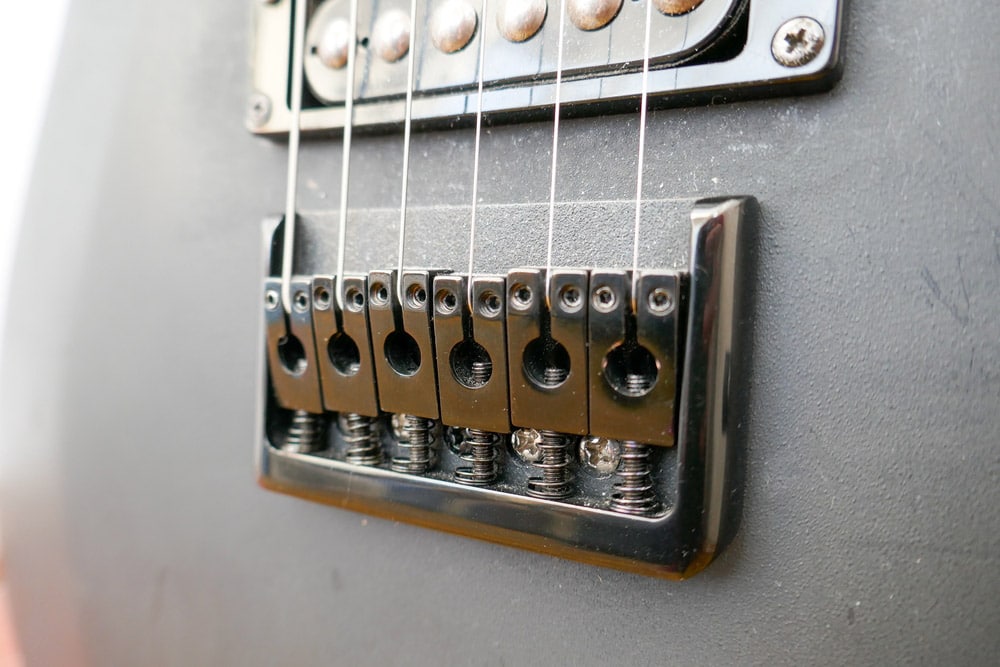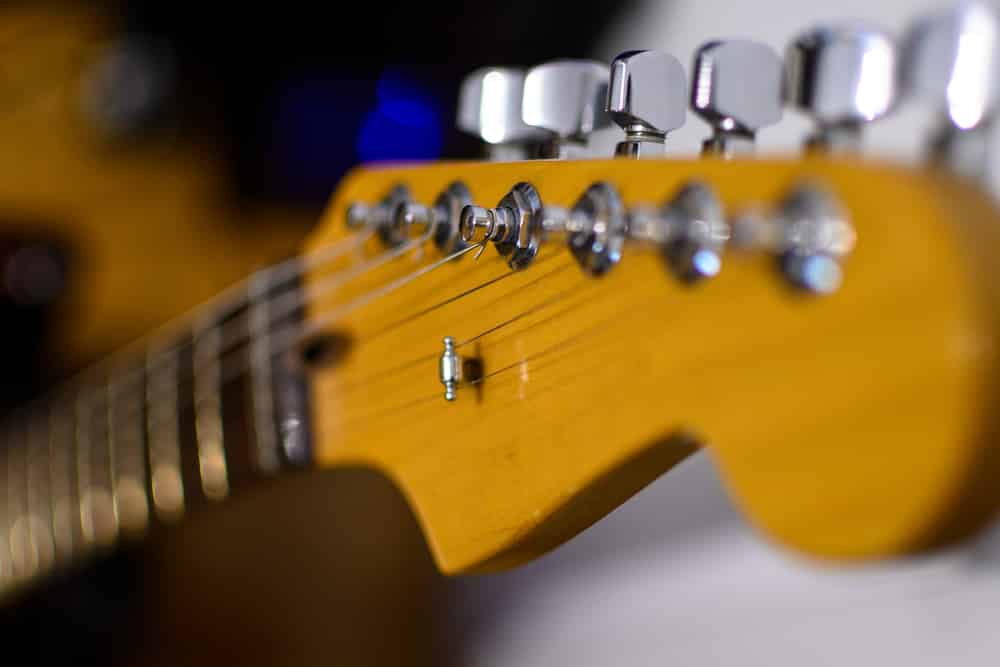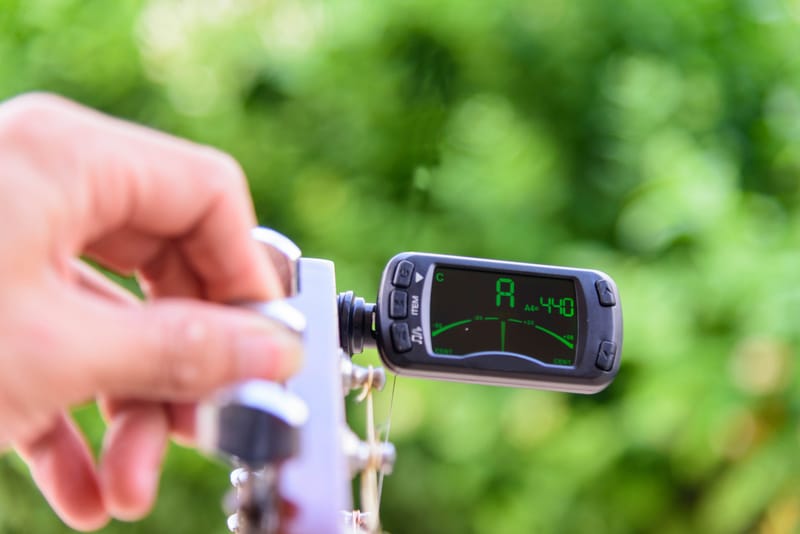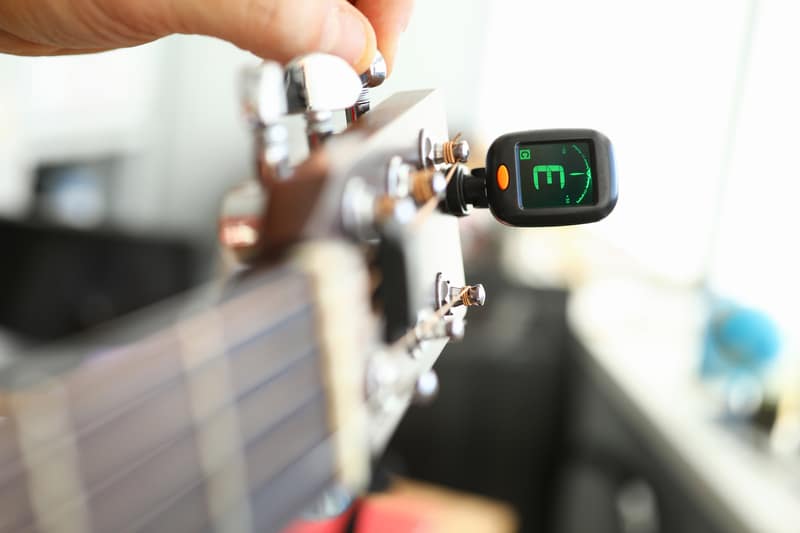
Every guitar player has to invest in some accessories to create high-quality music and a detuning device is one of them. D-Tuna is one of the most widely used guitar detuning devices that allows the users to retune the lower strings on the electric guitar in an instant.
In particular, it helps retune the string to and from D and E positions. However, many users have reported problems with this device but they are considerably easy to fix.
D-Tuna Problems
- Intonation Problems
Bad intonation is the most common issue with this detuning device. The solution is to check the bridge positioning and make sure you are using a fine tuner. The bridge positioning is essential because the bridge is linked with the pickups.
Ideally, the bridge must be positioned at a point where the string’s breakpoint is at the exact distance of a scale length. So, fix the bridge positioning and it’s likely to fix the bad intonation. Keep in mind that proper stabilization of the bridge is essential as well because it directly impacts the tuning.
Also, once you stabilize the bridge, it’s best to block it to make sure the string tension doesn’t alter.
- Not Working
D-Tuna is a reliable detuning device but some users have been complaining about the functionality issue. In case your device isn’t working either, you need to check the fine tuner as it must be all the way up. This is because when the fine tuner is installed downwards, the device’s barrel gets caught in it, hindering its performance.
So, make sure the fine tuner is always up. Secondly, you must check the allen screw that’s installed in the barrel. In particular, when the screw gets too far in, it does not stand on the big screw’s shaft properly. So, inspect the allen screw, and if it’s too far in, loosen it up.
Moreover, it’s recommended to opt for a longer tuning post (it usually comes with the D-Tuna). Last but not least, keep in mind that this detuning device only works with Floyd Rose tremolos, so if you are using some other instrument, it’s time to change your instrument.
- Guitar Not Keeping In Tune With The Detuning Device
If you have connected the detuning device with the guitar but it keeps getting out of tune, you must ensure that the tremolo is fixed on the body. That’s because the flutter or float on the bridge can result in stabilization issues, leading to tuning errors
Secondly, you must ensure that the E string is properly stretched out and connected with the fine tuner; it must be 80% out. Last but not least, you must tune the E string for pitch. For this purpose, pull out the detuning device and use a small screw on the side for making adjustments.
Then, go to and fro between the D and E strings to check the tuning. Another solution is to check the tremolo and make sure it’s on a level with the body, and in case you have to tighten it up but there is no room for tightening, you can add some springs.
- Not Returning To E String
If you have connected your detuning device to the guitar but it’s not returning to the E string from D, you must check the FR posts. In particular, the FR posts must be leveled because if one post is higher as compared to the other one, it produces uneven tension.
While you are leveling the FR posts, make sure the trem is properly blocked as it’s essential to minimize the upward pull (it won’t work on the floating trem). To make sure that the trem remains blocked, you should tighten the claw springs.
Secondly, you should look for a bur on the device’s side and make sure to smoothen the bur by filing it. In addition to this, you must look where the locking bolt and spring slide meet and check its inner side. If there are excessive plating and casting marks, you can smoothen them with a needle file.
Lastly, use sandpaper to clean the paint off the allen bolt and the sliding block. Once these parts are sanded, apply some grease and their movement will be smooth.
- Tuning Is Drifting
When the tuning on the guitar is constantly drifting, the first solution is to ensure the locking nut is fully locked. That’s because if the tension changes, it results in nut sliding, hence the drifting. Secondly, the fine tuner must be backed out to allow clearance.
This is because if the fine tuner is up, it develops a wedge situation that leads to drifting. So, lock the locking nut and back out the fine tuner. Last but not least, make sure that the spring is moving smoothly and is not jammed.
On the other hand, many people struggle with the drifting issue when the guitar strings are new. If you have recently changed the strings, make sure they are properly stretched out. Also, once the strings are stretched, tune the open string to D.
- Not Returning To D String
If the detuning device is unable to return to the D string, it’s likely because of improper installation. To set up the device, follow these instructions;
-
- Pull away the detuning device from the bridge
- Tune the lower E string to D before you lock the locking nut
- Make sure all the strings are well-tuned (in case of incorrect tuning, adjust them)
- Once the strings are tuned well, push in the detuning device
- Now, adjust the set screw until you achieve E pitch and the device will return to the D string smoothly
In addition to adjusting the strings, you have to remove the detuning device and take off the saddle bolt to look for a gouge. In case it’s chewed up, use a 1200 grit sandpaper to smoothen it out and apply some grease.
Moreover, you must ensure that the plating is not too thick because it restricts the bolt seating through the D-Tuna’s channel (if the plating is thick, you must file it). Secondly, you have to check the little screw on the inside of the device and add some thread tape to ensure it remains calibrated.
Last but not least, you must check the string size because you can only use a 0.046 gauge string for the lower E because bigger strings need more tension, which is not possible for D-Tuna to produce.
- Unable To Pull Out The D-Tuna
If you are using the detuning device and it’s tuned well in the “out” location but causes issues when it’s pushed “in,” you won’t be able to pull out the device. The solution is to check the pressure because excessive downward pressure from a fine tuner can cause this issue.
Secondly, you must ensure that the bridge is set up for dive because it doesn’t work well with a floating bridge.
- Hard To Pull
The detuning device needs to be smooth as guitarists need to shift from D to E strings and vice versa, However, if the device has become hard to pull, you have to check the chroming. This is because some D-Tunas have a thick plating, which makes it challenging to pull.
The solution is to fine or smoothen the chrome to reduce it. In addition to this, make sure that the bar is only set for diving the pitch.
- Not Detecting The Vibration
If the detuning device is unable to detect the vibrations, it’s time to check the tuner. That’s because if you clip the tuner far above the headstock, it fails to detect the string vibrations. The solution is to move your tuner and clip it closer to the detuning device and the guitar.
The Bottom Line
A guitar detuning device is a great option for people who like to play at low pitches and want to create a chorus effect. However, if you are unable to use the D-Tuna properly, these solutions should help you. In case you need more assistance, it’s best to contact customer support.





